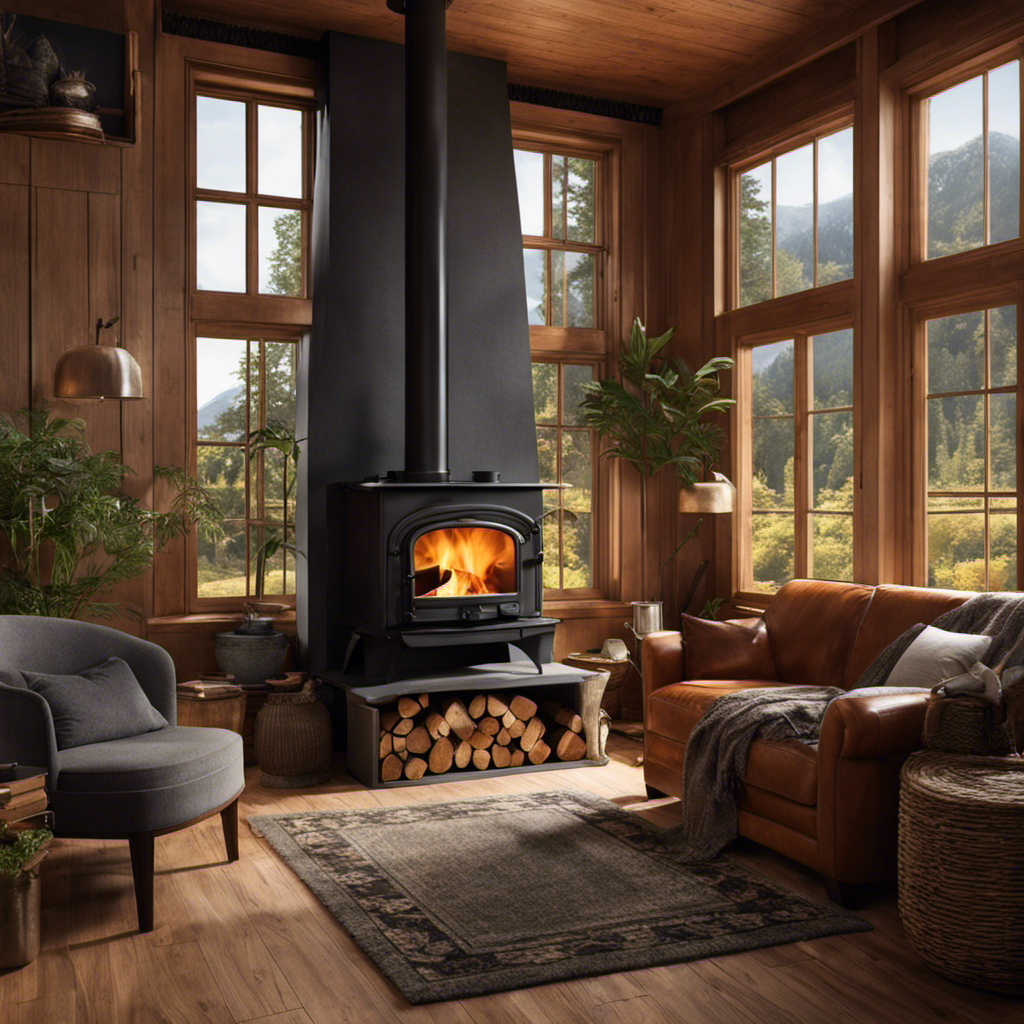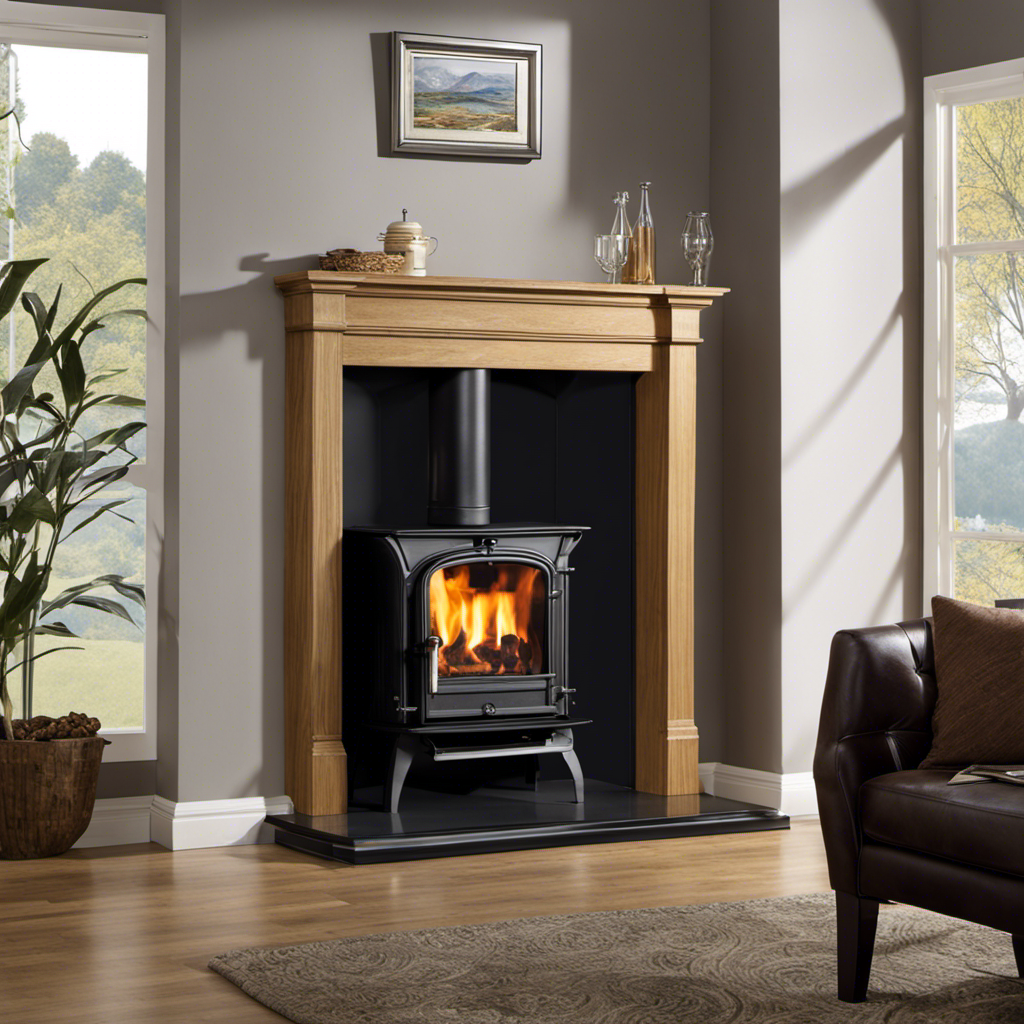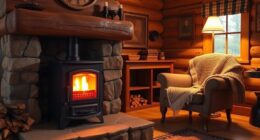Hello, all! Join us! Keep reading to unlock a treasure trove of valuable information that will benefit you greatly. So, come along on this exciting journey with us!
Ever wondered how to get rid of that pesky ash from your wood stove? Well, look no further! With my tried-and-true tips, you’ll have your wood stove looking clean and good as new in no time.
I’ll take you through the step-by-step process, provide you with the necessary safety precautions, and even give you some maintenance tips to prevent ash buildup in the future.
So, let’s roll up our sleeves and get that wood stove shining!
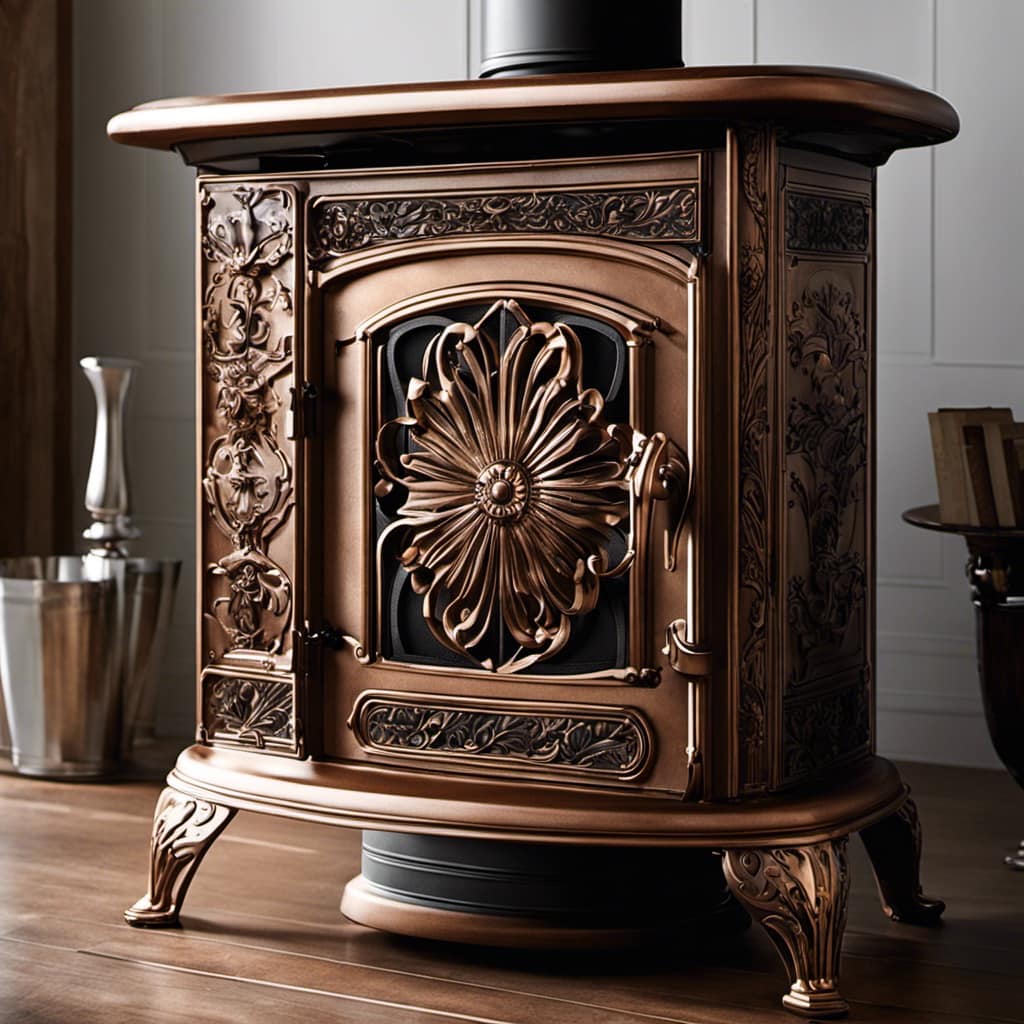
Key Takeaways
- Removing ash regularly improves stove efficiency and performance.
- Safety precautions such as proper ventilation and avoiding flammable materials are important when removing ash.
- The tools and supplies needed for ash removal include an ash shovel, stiff brush, vacuum cleaner with HEPA filter, non-abrasive cleaning solution, and damp cloth.
- The step-by-step process for ash removal includes allowing the stove to cool completely, using an ash shovel to remove loose debris, transferring ash to a designated metal bucket for disposal, and disposing of ash away from flammable materials.
Benefits of Removing Ash Regularly
I find that regularly removing ash from my wood stove has several benefits. Not only does it improve the overall efficiency and performance of the stove, but it also helps to maintain a clean and safe environment.
When ash builds up in the stove, it can hinder the airflow, making it harder for the fire to burn properly. This can result in less heat being produced and wasted energy. Additionally, a buildup of ash can increase the risk of a fire hazard. Embers can easily ignite the accumulated ash, leading to a potential house fire.
Necessary Safety Precautions
Before starting the cleaning process, it’s important to ensure that I have the proper safety gear and precautions in place. Ventilation is crucial when removing ash from a wood stove. It’s essential to open windows or use exhaust fans to create a flow of fresh air, preventing the buildup of harmful gases like carbon monoxide.
Common mistakes to avoid during ash removal include using flammable materials near the stove, such as paper or cardboard, which could easily ignite. Another mistake is not allowing the ashes to cool completely before disposal, as hot embers can cause fires.
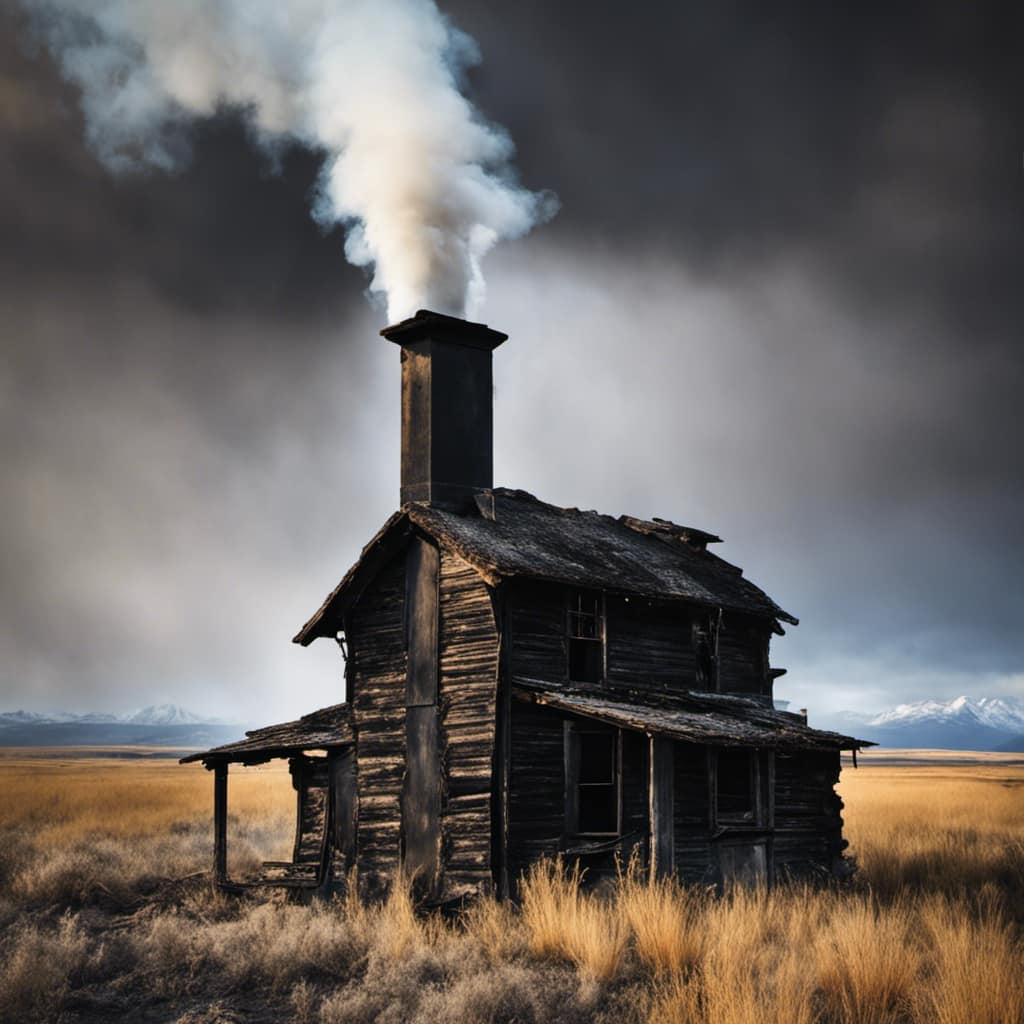
Taking these precautions will help keep me safe during the cleaning process.
Now, let’s move on to the tools and supplies you’ll need.
Tools and Supplies You’ll Need
To properly clean a stove, you’ll need specific tools and supplies. Here are the essential items you’ll need for cleaning your wood stove:
Ash shovel: This tool is designed to scoop and remove ash from the stove without spreading it around.
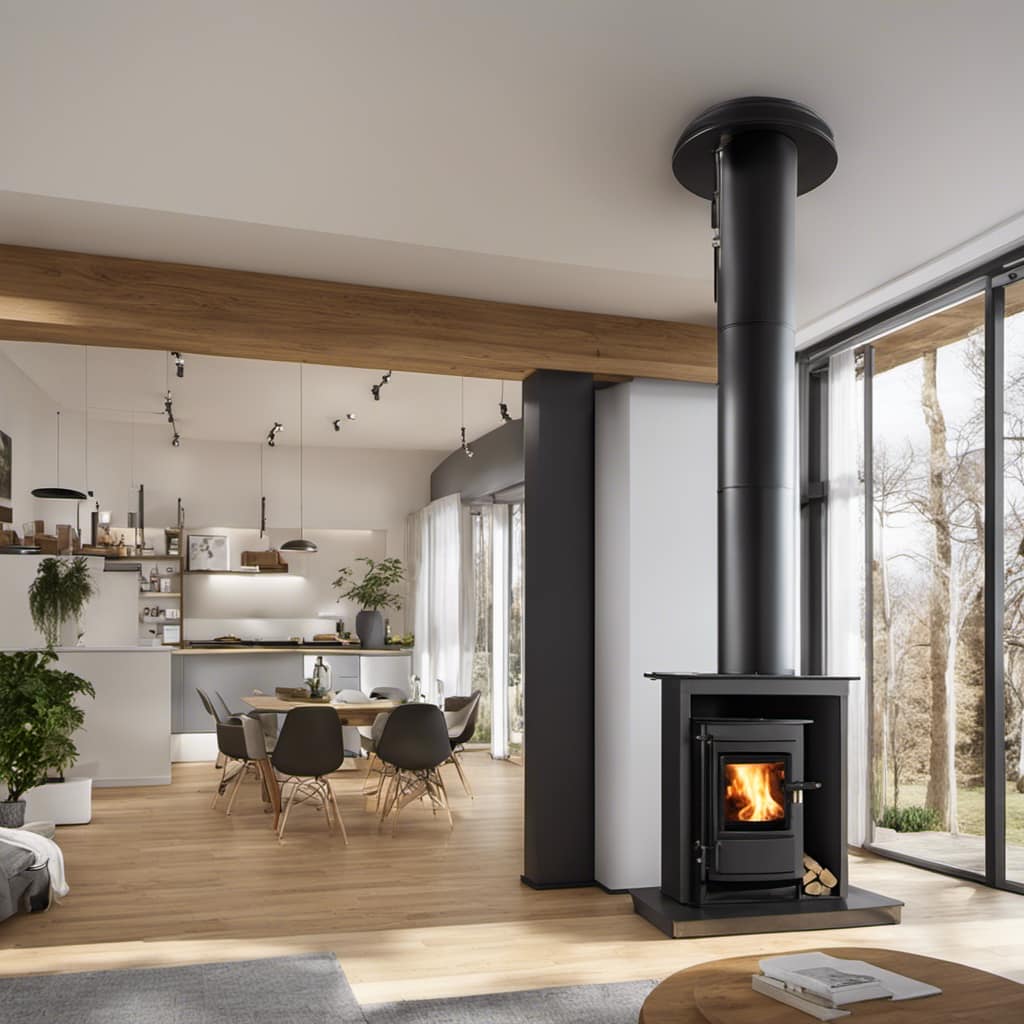
Stiff brush: Use a brush with stiff bristles to scrub off any stubborn soot or residue.
Vacuum cleaner: A vacuum with a HEPA filter is ideal for sucking up fine ash particles without releasing them back into the air.
Cleaning solution: Choose a non-abrasive cleaner specifically formulated for wood stoves to remove grease and grime without damaging the surface.
When it comes to cleaning techniques, start by removing any loose debris with the ash shovel. Then, use the brush to scrub away any remaining ash or soot.

Next, use the vacuum cleaner to remove any fine particles. Finally, wipe down the stove with a damp cloth and the cleaning solution to ensure a thorough clean.
Remember to follow proper ash disposal methods to prevent any fire hazards.
Step-by-Step Process for Ash Removal
Using the ash shovel, I scoop up any loose debris from the stove. It’s important to remove the ash properly to ensure both safety and cleanliness.
First, I make sure that the stove is completely cool before starting the cleaning process. Then, I carefully scoop the ash into a metal bucket designated specifically for ash disposal. This bucket should be kept outside, away from any flammable materials, until the ash cools completely.
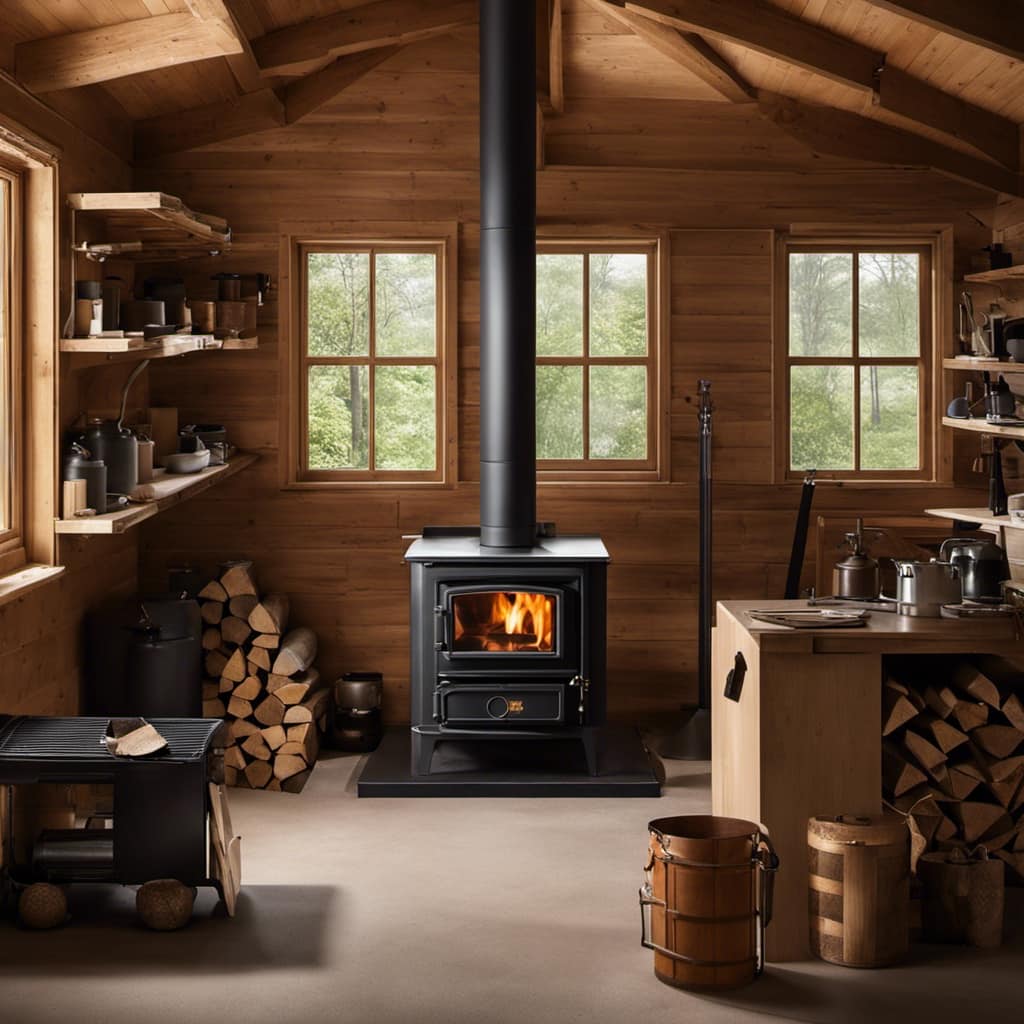
Once cooled, I transfer the ash to a sealed bag or container. It’s crucial to avoid disposing of ash in plastic bags or containers, as it can still retain heat and potentially cause a fire.
Maintenance Tips to Prevent Ash Buildup
I always make sure to clean out the ash from my wood stove regularly to prevent any buildup. Not only does this help prevent damage to the stove, but it also maximizes its efficiency. Here are some maintenance tips that I follow to keep my wood stove in optimal condition:
Empty the ash pan: After each use, I remove the ash pan and dispose of the ashes in a metal container. This prevents any leftover embers from reigniting and causing damage.
Clean the firebox: Using a brush or vacuum, I thoroughly clean the firebox to remove any loose ash. This ensures proper airflow and prevents clogs.
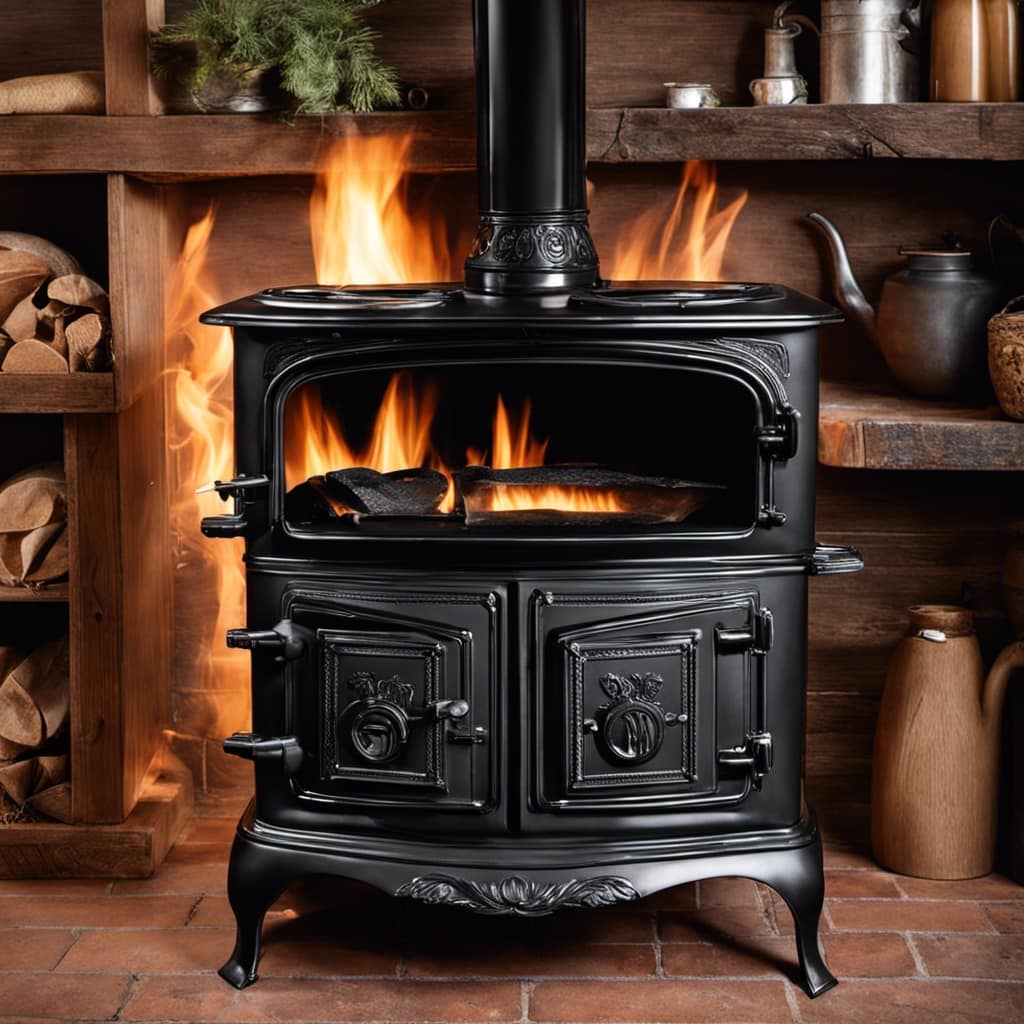
Inspect the gaskets: I check the gaskets around the door and glass regularly to ensure they’re intact. Damaged gaskets can lead to heat loss and reduced efficiency.
Schedule professional maintenance: Once a year, I have a professional inspect and clean my wood stove to identify any potential issues and ensure it’s operating at its best.
Can capping off a wood stove pipe affect the removal of ash from the wood stove?
When considering capping off a wood stove pipe, it’s important to follow a capping off wood stove pipe tutorial to ensure proper ventilation and prevent the build-up of ash in the wood stove. Improper capping off can disrupt the removal of ash, leading to potential safety hazards.
Frequently Asked Questions
Can I Use Water to Remove Ash From My Wood Stove?
Yes, you can use water to remove ash from your wood stove. However, there are both pros and cons to consider. Water can help to minimize dust, but it may also create a messy sludge that is difficult to clean.
How Often Should I Clean Out the Ash From My Wood Stove?
Cleaning out the ash from my wood stove is an essential task to maintain its efficiency. I use the appropriate tools, like a shovel and a metal bucket, to safely remove the ash. Regular cleaning ensures optimal performance.
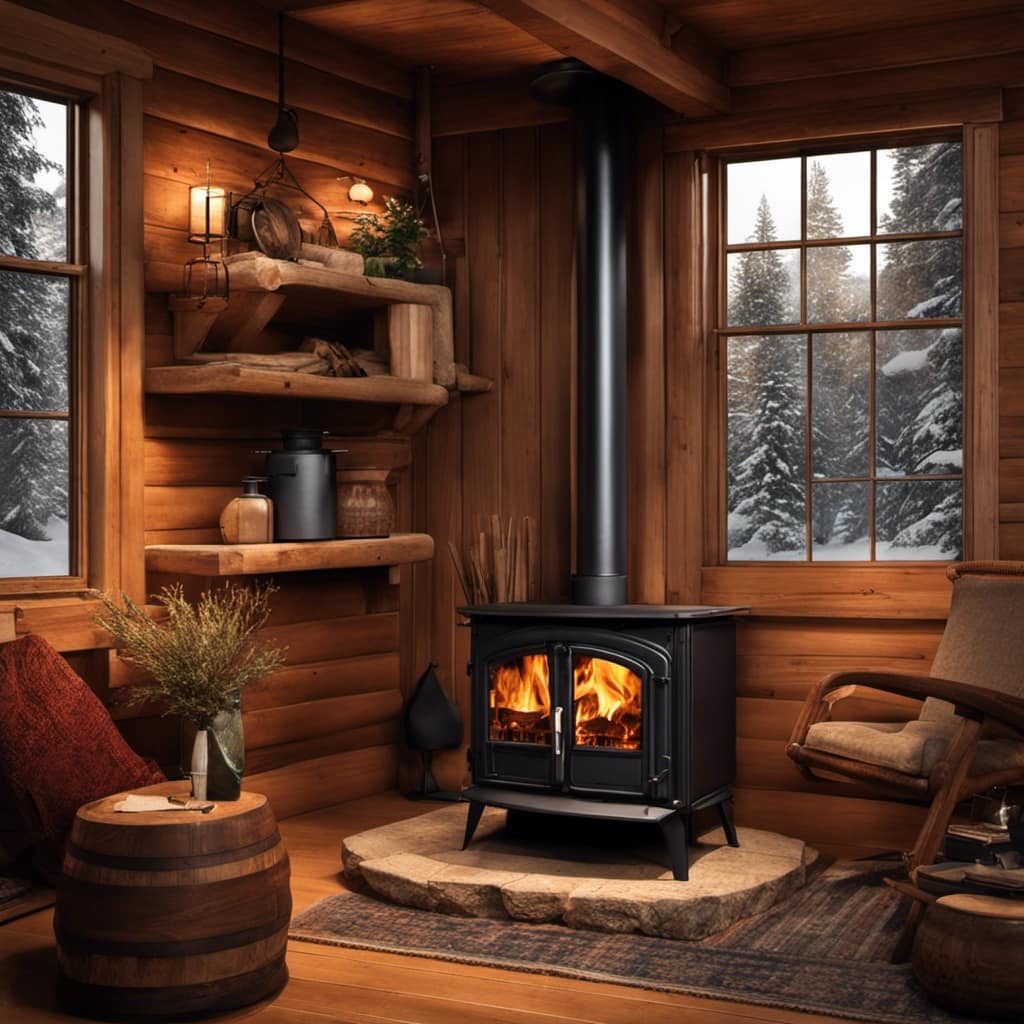
Is It Necessary to Wear Protective Gloves When Removing Ash From the Wood Stove?
Wearing gloves when removing ash from a wood stove is necessary, not overkill. It’s important to protect your hands while cleaning to avoid burns and irritation from the ash.
Can I Reuse the Ash for Any Other Purposes?
Yes, you can reuse the ash for other purposes. It can be used for composting, as it enriches the soil with nutrients. Additionally, ash can be used as a natural deodorizer to absorb odors in your home.
How Can I Dispose of the Ash Safely and Responsibly?
When it comes to disposing of ash from a wood stove, it’s important to consider the environmental impact. There are various safe disposal methods available that can help minimize any potential harm.
Conclusion
In conclusion, regularly removing ash from your wood stove is essential for maintaining its efficiency and preventing possible hazards. By following the step-by-step process and using the necessary tools and supplies, you can easily and safely remove ash buildup.
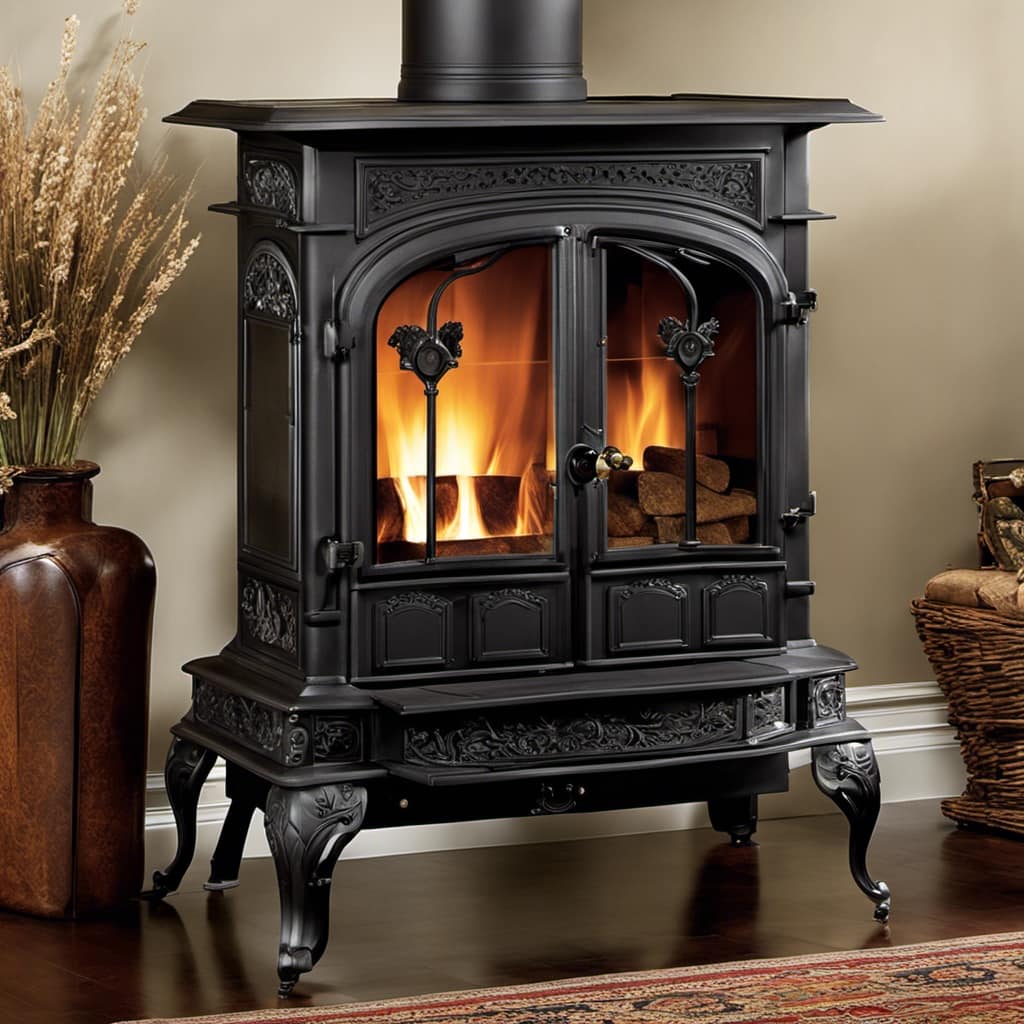
Remember to take necessary safety precautions and consider these maintenance tips to prevent future ash accumulation. By keeping your wood stove clean, you can ensure optimal performance and enjoy the benefits of a warm and cozy home.
Growing up surrounded by the vast beauty of nature, Sierra was always drawn to the call of the wild. While others sought the comfort of the familiar, she ventured out, embracing the unpredictable and finding stories in the heartbeat of nature.
At the epicenter of every remarkable venture lies a dynamic team—a fusion of diverse talents, visions, and passions. The essence of Best Small Wood Stoves is crafted and refined by such a trio: Sierra, Logan, and Terra. Their collective expertise has transformed the platform into a leading authority on small wood stoves, radiating warmth and knowledge in equal measure.




